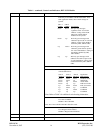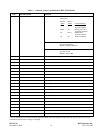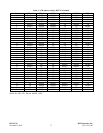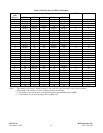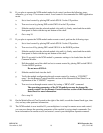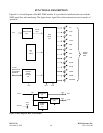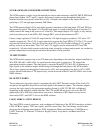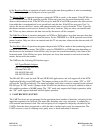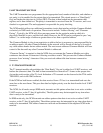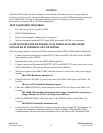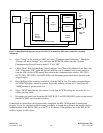RFL NCM RFL Electronics Inc.
November 6, 2007 21 (973) 334-3100
SYSTEM OVERVIEW
The Network Communications Module (NCM) is an Asynchronous Data Module designed for RFL
IMUX 2000 T1 and E1 Multiplexers. The NCM provides one DCE Half/Full-Duplex channel between
an unlimited number of locations using a single 64 kbps DS0 time slot. The NCM provides an NMS
communication path between nodes of a T1 or E1 network, and can also be used for party-line
applications such as DNP and Modbus networking. The NCM automatically detects if the system is T1
or E1 and configures itself appropriately.
The NCM in NMS application mode is not required for T1, but could be utilized to speed up network
communications, or provide a communication path to remote locations. The NCM is required for E1
systems, because an out of network communication path does not exist.
The NCM supports RS-232, RS-485 (2W and 4W), and Telnet interfaces with the MA-402I, MA-485
and MA-490 Telnet I/O respectively, and supports Equipment and Payload Loop-backs. The NCM
does not support handshaking of any kind, and does not respond to RTS. The NCM uses Stop-bit
reduction during transmission of asynchronous data as a means to compensate for received baud
slightly greater than normal. For RS-232 applications, the NCM does keep CTS, RLSD and DSR
active at all times for external equipment requiring these to be active.
The NCM supports either one or two ports depending on the interface installed. Each port includes a
UART, and can transmit to and receive from the T1/E1 bus, and transmit to and receive from one
another, depending on the configuration and application. The ports support 38.4k, 19.2k, 9600, 4800
and 2400 baud, support 7 or 8 data bits, and support Even, Odd, Mark Space and No Parity.
The NCM utilizes a proprietary communication protocol over T1/E1 consisting of two data and two
idle/address frames. The two data frames make up the entire data package, and are transmitted and
received in consecutive frames. The idle/address frames occur only during idle-time between data
packages, and are also transmitted and received in consecutive frames. Only the NMS Mode currently
supports addressing.
The NCM does not support signaling bits within the T1/E1 data stream, however, the CAS setting on
the NCM module will “block” the selection of timeslot 16 for an E1 multiplexer using CAS,
preventing the NCM from potentially disrupting other modules in the network.
The NCM supports “Address Passing” and “Character Pacing” in the NMS Mode of operation.
“Address Passing” qualifies messages prior to sending them out of port (#2) to the CM-X module.
“Character Pacing” emulation is done as a result of the “Address Passing” requirement.
A Rogue Control feature is available which prevents a rogue PC program or another module from
“stepping” on the NCM time slot, and bringing down the entire NCM Path.




